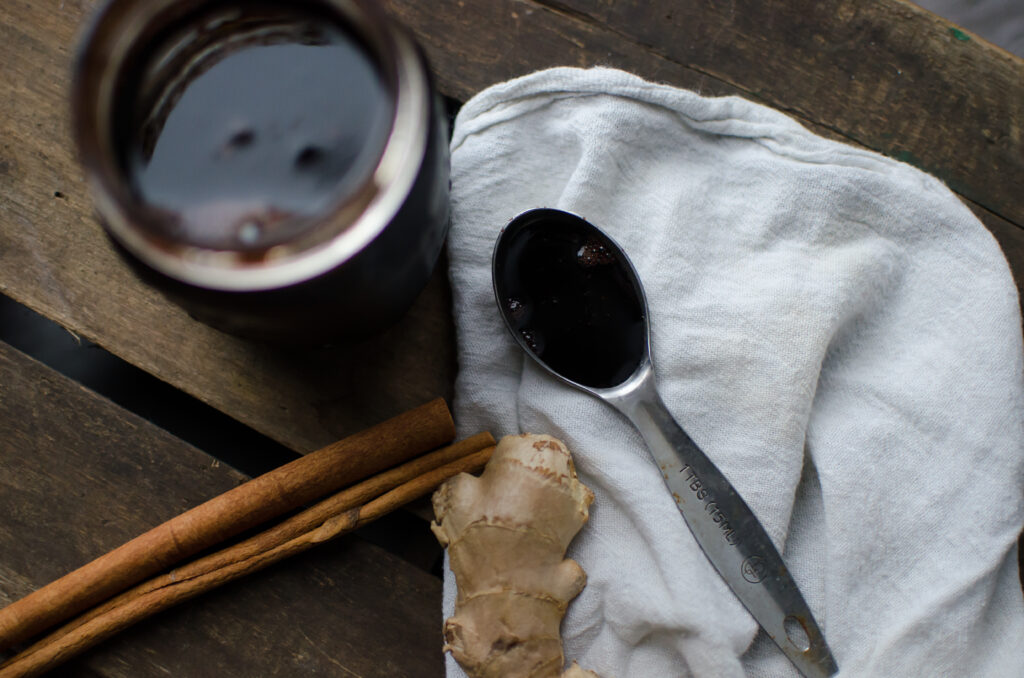
Every year my inbox floods with questions about making instant pot elderberry syrup. And every year I will always, always, tell you not to make elderberry syrup in the instant pot. Unless, of course, new studies prove me otherwise. Everyone always looks at me like I have an octopus on my face when I say that, but honestly, it’s not rocket science when you’re an herbalist.
Let me preface this with, however you choose to make it is your choice. I’m just offering you an opinion as an herbalist, and through my own experience. I can only provide you with facts that could alter, or solidify, your decision.
Elderberry and Elderflower are both exceptional herbal remedies for the common cold and influenza. Both became increasingly popular during the H1N1 pandemic in the United States in 2009, when a study proved that elderberry inhibited the ability for the H1N1 virus to attach itself to human cells.
Since then, a new study done in 2020 has proven that not only are elderberry and elderflower good for influenza, they also help with the common cold.
You can learn all about elderberry syrup benefits here on my blog. In fact, I make a spectacular elderberry and astragalus syrup recipe that I’ll link below (you can also read the blog post here). However, I have never, and will never, make instant pot elderberry syrup, and for good reason.
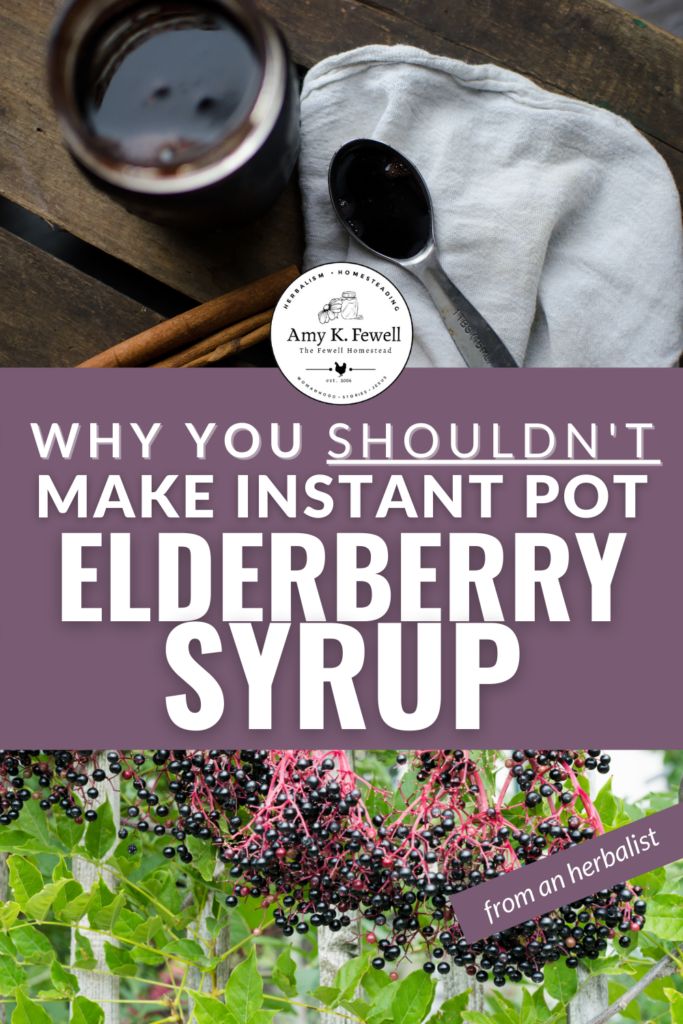
Elderberry Toxicity with the Instant Pot
Elderberry is generally safe to ingest, however, the seeds inside of the berries (and all other parts of the plant) can be toxic. Note that I said “can be”. Most medicinal plants have some kind of toxicity if taken in too high a dosage or not cooked properly.
While elderberry will mostly just cause an upset stomach, diarrhea, and possible vomiting; prolonged use of toxic elderberry preparations can cause major issues. Not to mention the issues it can cause in young children. It’s important to note that sometimes the toxicity isn’t just instant, it can build up in your cells. We’ll talk about that in a second.
The stems, branches, leaves, seeds (which are inside of the berries), and root of the elder plant are all “poisonous” with cyanide-inducing glycosides. The plant can cause a toxic buildup of cyanide in the body if not prepared properly. In order to cause the berries to lose their toxicity, you must cook the berries for at least 10 minutes, which causes a 10% decrease in the cyanide-inducing glycosides. However, most studies recommend that you cook the berries for at least 20 minutes to reduce the amount even more.
I personally find that we still see the effects of some elderberry toxicity with only cooking our berries for 10 minutes. We have seen those symptoms subside when we cook the berries for at least 20 minutes on a medium heat after bringing them to a boil. I do not recommend cooking the berries over 45 minutes, as they begin to lose their medicinal properties.
When elderberry syrup is cooked down, people often don’t realize that the cyanide in the berries is partially released through steam. We see this with other foods, like fish, as well.
When you don’t release the steam while cooking elderberries, there’s the potential of more cyanide build up in your syrup. In an instant pot, or a pot with a tight lid, the steam cannot escape as efficiently (if at all) as it would in a pot without a lid. This is one of the main reasons I recommend cooking your berries for at least 20 minutes before placing a lid on the pot that you’re using. And it is most especially a reason why I don’t recommend using the instant pot for elderberry syrup.
If you’re not sure how a pressure cooker (instant pot) works, it actually works through the pressure of steam build up. This means that absolutely no steam is released from the instant pot until you manually release it after you’ve cooked your berries. This completely defeats the purpose, mostly because the steam with the cyanide has already trickled into your syrup, therefore possibly contaminating it.
It’s less likely for this to happen when using a pot with no lid. The steam is still very much able to escape with less chance of contamination.
Cooking the berries is another reason most herbalists don’t recommend making a tincture with elderberries. There have been a few cases where someone has made an elderberry tincture, only to have it become a cyanide tincture, which is extremely dangerous. You could, potentially, heat the elderberries before creating the tincture. However, you’d basically just be making an elderberry syrup and then adding an alcohol preservative, which is not a tincture at all.
With that said, more studies need to be done on elderberry tinctures, as there are more people who have success with it than failure. There is some talk that because you are allowing the elderberry to sit for 4 weeks, the cyanide decreases. But I have yet to see a study on it.
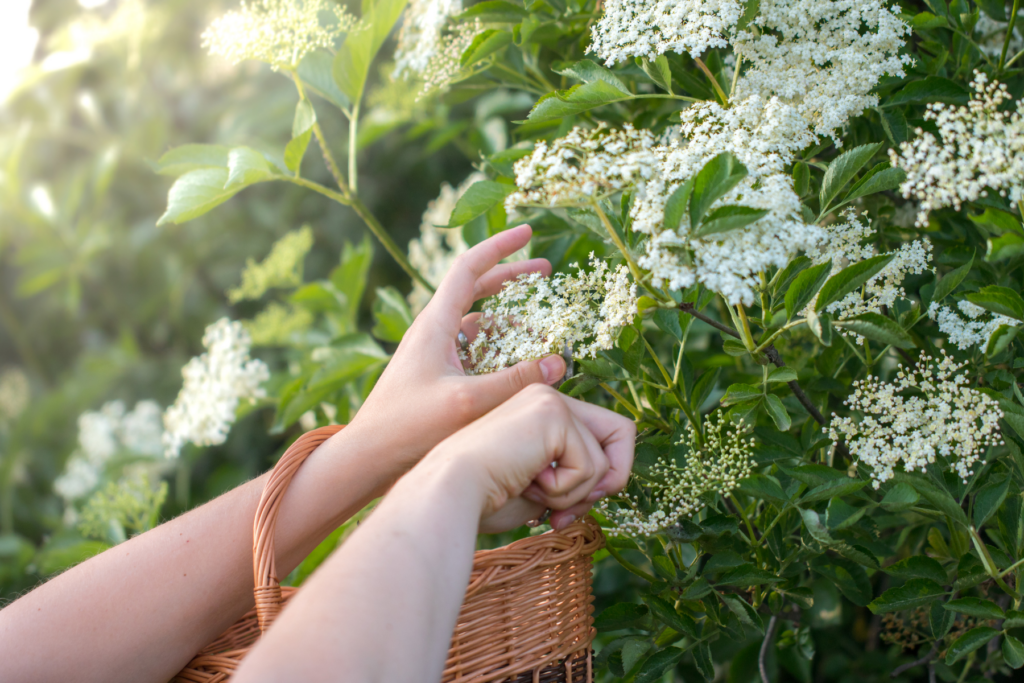
It’s important to note that cyanide can build up in your system. This is not just a simple “oh I’ll get a stomach ache and be ok.” If you continue to eat or drink something with symptom inducing cyanide in it, the cells in your body will continue to build up with cyanide. When a cell dies from cyanide poisoning, it does not come back to life.
This is extremely important when giving children elderberry syrup that could be contaminated with cyanide as well. Their small bodies can only take on so much before you begin seeing more serious symptoms and side effects, especially in their liver and kidneys.
More than anything, though, the only studies I’ve seen about elderberry consistently say that the duration of heat is what lowers the toxicity in the plant, not the duration of pressure. If you are not giving the proper duration of heat with an instant pot, all you’re doing is cooking the berries, but still leaving the toxic cyanide in the syrup because it hasn’t been cooked long enough.
Remember, it’s not about cooking the berries like you would a whole chicken. A pressure cooker can cook a whole chicken in half the time due to pressure, not just heat. But it is the duration of heat that rids elderberries of their toxicity, not the duration of pressure.
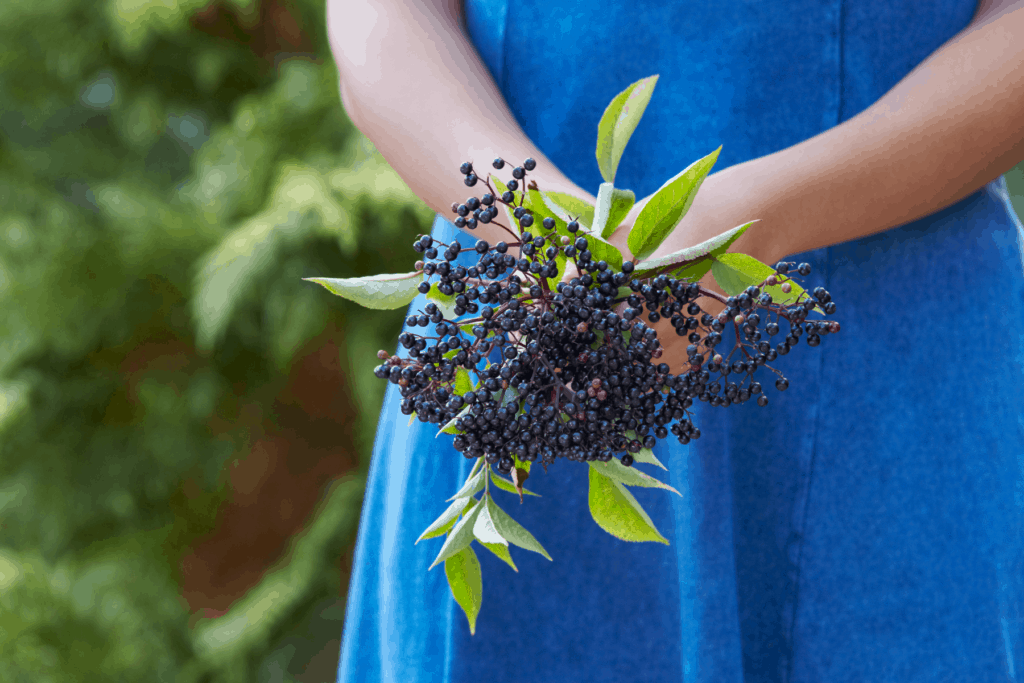
A Concerned Herbalist
I know this might seem trivial to some, but it’s important to me as an herbalist. This is why I don’t use an instant pot for elderberry syrup, and I thought I’d share that with you as well. As a concerned herbalist, I feel it’s my responsibility to put out consistently good information, not just go with the trends. We have seen the effects that elderberry toxicity can have in our own family, and so, we just try to choose (and share) the best way that we know how.
My theory is, and always has been, that if I’m going to put effort into something, I might as well do it right. And if there is any chance for error in herbalism, I want to know that I did my best to create a product without the chance of error. Also, I never want to produce a product that could give the world just “one more reason” to say that herbalism isn’t the best alternative to modern medicine.
So to recap…
- Elderberries do not decease in toxicity until they have been cooked for at least 10 minutes. However, 20 minutes to 30 minutes is the most recommended suggestion, as some toxicity symptoms can still happen even after 10 minutes of cooking.
- Elderberries do not decease in toxicity due to pressure cooking. So far, studies only show that the toxicity decreases due to the duration of heat that the elderberries receive while cooking (not the duration of pressure). You still need to cook your berries for at least 20 to 30 minutes.
- Cyanide can be released in steam. If you are using a pressure cooker or instant pot to make your syrup, you’re simply putting the cyanide that’s released in the steam back into your syrup, since steam cannot escape a pressure cooker during the cooking process.
There is of course the argument that there isn’t enough cyanide in the berries to cause issues, but I personally beg to differ. As I mentioned before, we’ve had elderberry toxicity (albeit, mild) in our own home when I was only cooking them down for 10 minutes. It was worse for children, not for adults. But give enough, it would affect adults as well.
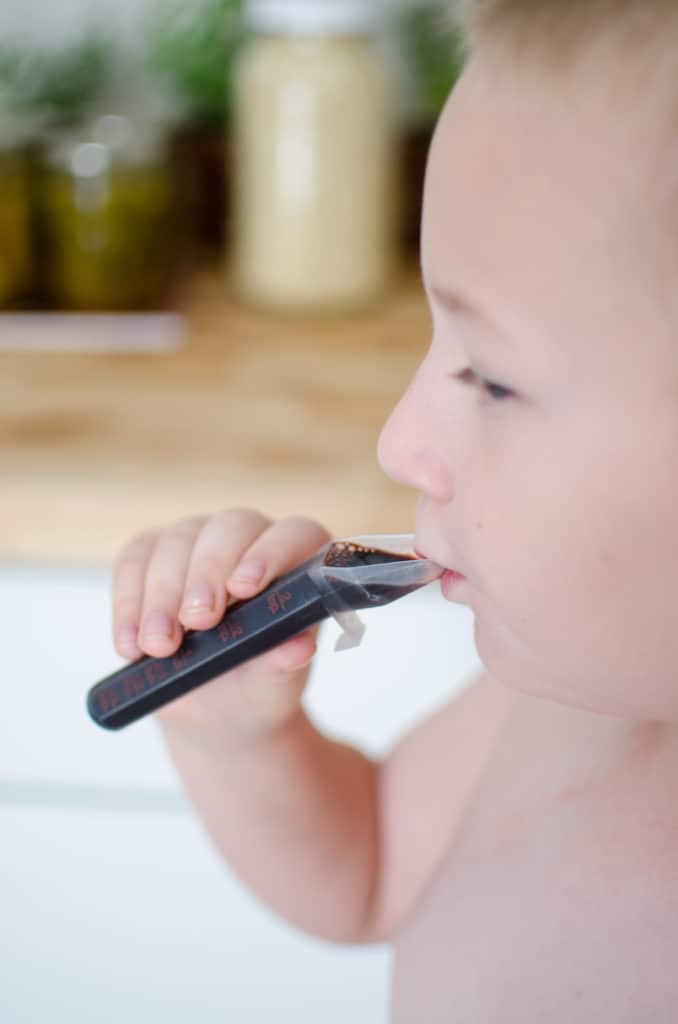
How to Make Elderberry Syrup
Now that you know the low down, let’s talk about a super easy elderberry syrup that you can make. It’s not just elderberry, though. It’s an elderberry and astragalus syrup that is one of the biggest immune boosting herbal preparations I’ve put together over the years. Elderberry syrup benefits are far and vast, and it’s an herbal preparation you should certainly learn how to make.
However, if you don’t want to use anything except elderberries, that’s fine too!
Other Posts You May Enjoy:
- Medicinal Uses of Goldenrod and Goldenrod Tincture
- The Best Antiviral Herbs and Viral Ailment Support Herbs
- Medicinal Uses of Mullein — Grow, Harvest, and Use
- Homemade Cough Syrup | Eucalyptus and Thyme
- Flu Fighting Elderberry and Astragalus Syrup
- Fire Cider Recipe | Immune Boosting Goodness
Elderberry and Astragalus Syrup
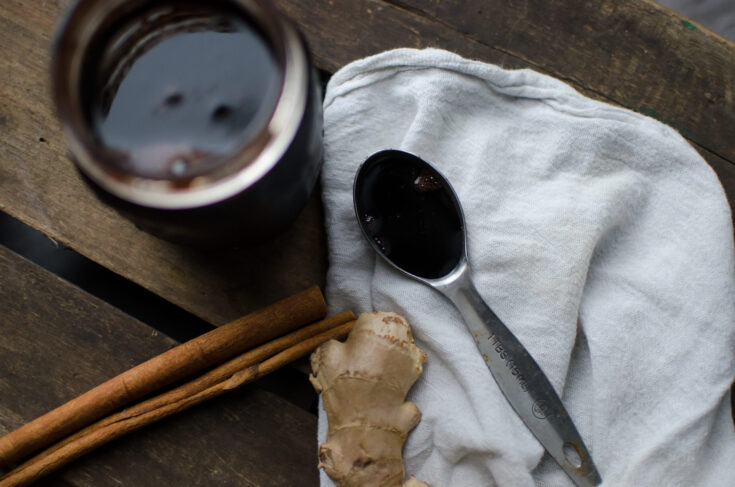
Make this immune boosting elderberry and astraglus syrup to prevent and reduce symptons of the common cold and flu!
Ingredients
- 100 g dried black elderberries
- 20 g dried astragalus root
- 15 g dried ginger root (or powder)
- 8 g dried clove (whole)
- 1 quart distilled water (or previously boiled water)
- ½ cup organic sugar (or evaporated cane juice)
- 1 cup raw honey
Instructions
- In a large sauce pan, add elderberries, astragalus, ginger, clove, and water. Bring mixture to a boil, stirring frequently. Cook down this mixture on medium-high heat, stirring frequently, until the mixture has reduced by half. This can take 20 to 30 minutes.
- Remove from heat and strain your liquid into a bowl or container (glass). Measure your liquid, which will be about 1.5 to 2 cups, most likely.
Place your liquid back into a sauce pan with your sugar and honey. - Bring your mixture back to a boil, stirring frequently to ensure proper mixing, and boil for 10 minutes, or until your desired consistency. We enjoy a thick honey like syrup, but you can make it as thin or as thick as you’d like. Consistency is not key.
- Funnel your syrup into glass bottles once cooled a bit, and cap tightly. Preserving them in the refrigerator promotes shelf life and ensures less bacterial contamination. However, they can be stored in your pantry or medicine cabinet as well.
- Make this recipe in smaller batches if only using for one or two family members. Double or triple the batch if making for larger families.
Notes
Raw Honey Note: When using raw honey in syrups, you’re not always using raw honey for its medicinal properties, as those are destroyed during the boiling process. You are using honey as a means to deliver the herbal medicine, as a natural sweetener. Raw honey doesn’t have to be used—you can use organic processed honey, but we always have raw honey on hand on our homestead.
Wait and add the raw honey after the mixture begins to cool to maintain its medicinal properties if you’d like to, however, you’ll most likely need to indefinitely store the syrup in the fridge to ensure a longer shelf life.
RESOURCES
Elderberry flavonoids bind to and prevent H1N1 infection in vitro; Bill Roschek Jr, et al.

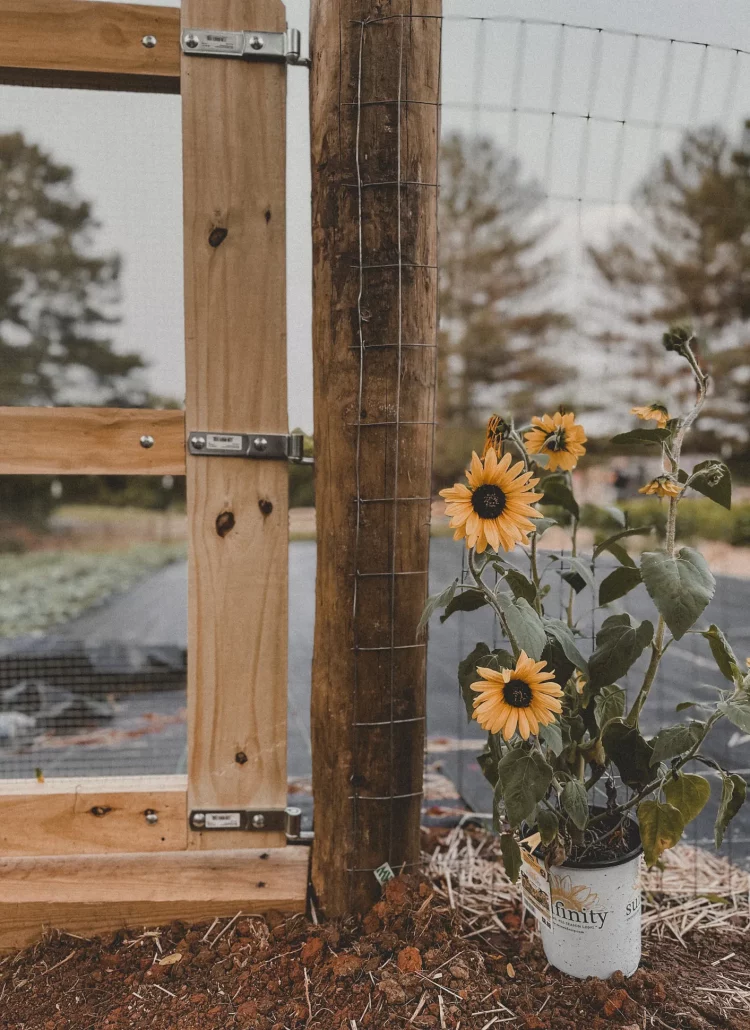
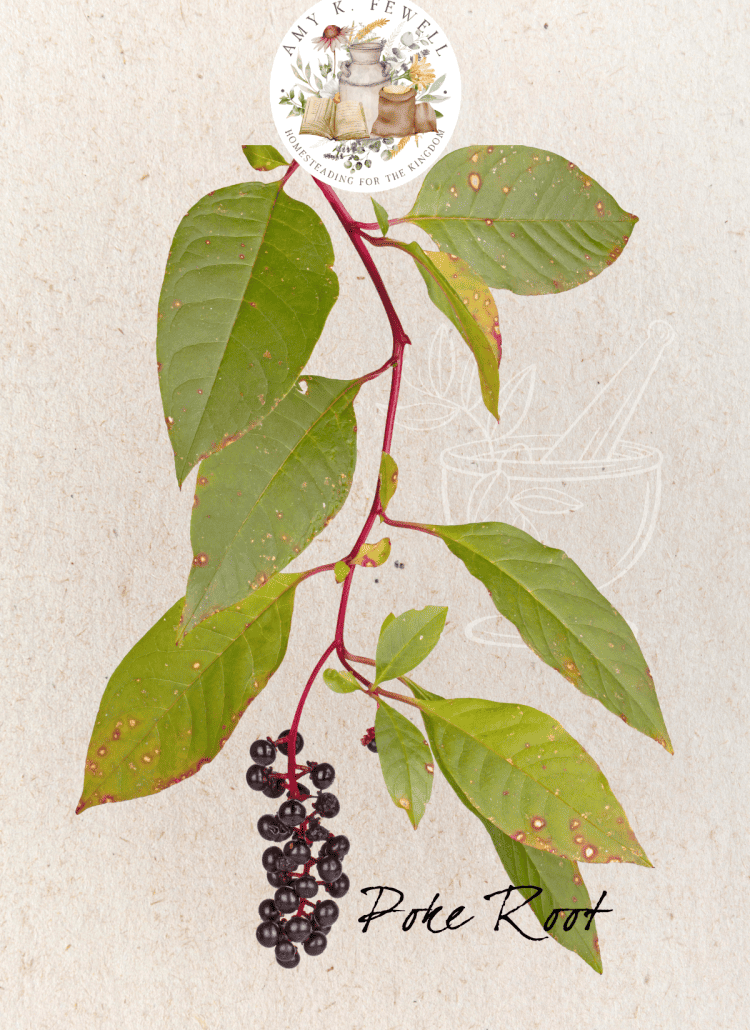
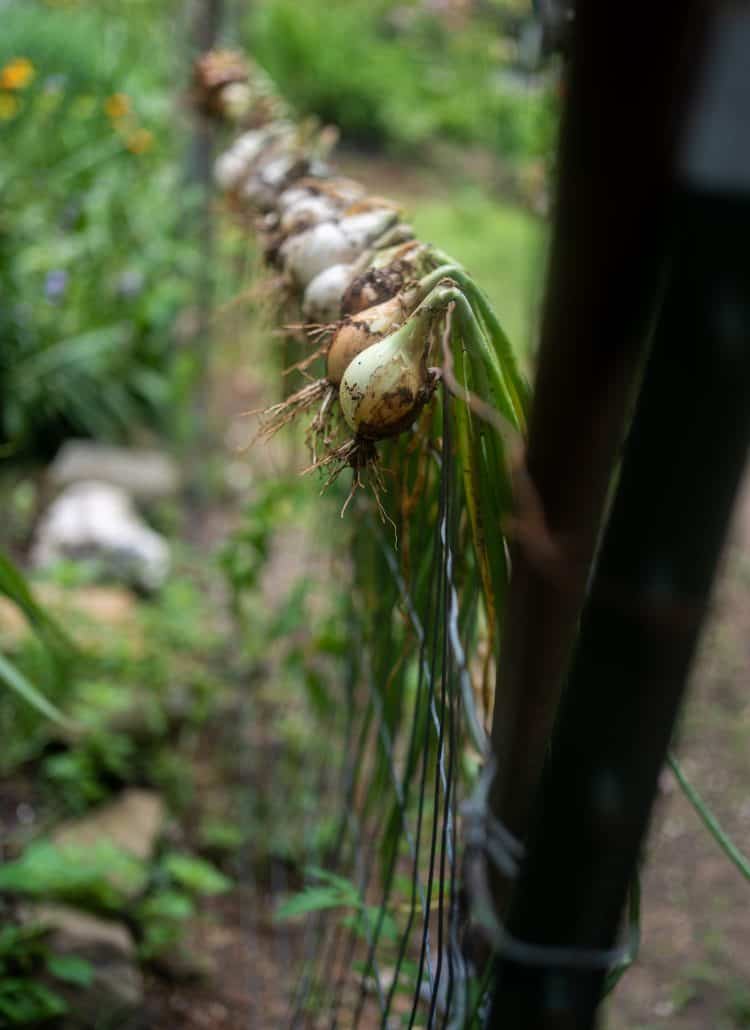
This is awesome info! How much syrup do you tend to take daily and when ill? This sounds like a brilliant combination!
This should answer any dosage questions! — https://thefewellhomestead.com/elderberry-astragalus-syrup/
Hello thanks for great info.
I just getting into herbs. Just wondering are elderberries ok in making teas?
If the elderberries are boiled beforehand, yes.
I have some fresh frozen elderberries I got from an elderberry farm. I want to make the syrup, but you say to use dried elderberries. Once cooked should I dry them first, does drying them get rid of some more of the toxicity? or can I just use them as is. Once cooked, can I use the water for anything? or just dump it out. Can you make pies or add them to cake or is this not recommended. Anything you can tell me would be helpful. I was going to use my instant pot, until I read your article, I’m glad I came across it. Thanks.
Once you cook the elderberries, you would not use them again. You can use fresh or dried elderberries to make the elderberry recipe. Please don’t throw out the water — that’s your elderberry syrup 🙂
I just purchased your home remedy book. Yeah me!!! I make this recipe but add rosehips for additional vitamin C. Thanks for sharing your awesome recipe for us newbies
Hi, I found a recipe that used the instapot which called for a 10 min open lid boil after the berries were cooked. Would that be sufficient to release the toxins?
yes!
I boiled dried elderberries for 20 minutes to put in my oatmeal; i drained the water I used to boil them down the sink. I thought the cyanide might get into the water, and the “good stuff” remained in the elderberries that were now rehydrated. Was that wrong? Did I just throw away the “good stuff”?
Would you please share the studies your quoting from within the article? I would love to read them. What ive learned is that drying, freezing and cooking all work to reduce the toxins so the concern would only be when using fresh berries this way. If you’ve found studies that relate to the toxin reduction in dried or frozen berries i would be grateful dor those links as well. Thank you for posting this!
I have fresh elderberries that I’m sharing with the robins ;-). What weight of fresh berries would you use in your recipe since they are heavier than the dried?
We grow elderberries and every year I juice them with a steam juicer, then can it. This year I want to freeze dry and make a powder form. I thought this would be a great alternative,so I don’t have to refrigerate and can take up less storage space. My question: after cooking the berries, can I freeze dry the liquid AND cooked berries? My thought was to use the pulp-iness of it all to have more substance and thereby a better product to blend into a powder once it’s FD. I figure as long as the berries are cooked, it’s all fine to use? Thx!
This is exactly the info I was looking for! Thank you for being so thorough and research based! I’ve been making elderberry for awhile but couldn’t figure out why directions often said I could use an instant pot OR the stove with the lid off. Those procedures get very different results (one is much more concentrated than the other). Your blog post settled it for me once and for all! Stove top only! And now I know I can set a timer for 20-30 min instead of “waiting till it reduces by half”—as if I ever remember where the line started! I hadn’t considered the importance for reducing cyanide by letting the steam escape! Thank you again!